 Truth is… most websites do not work. Printers or print brokers who thought by putting out a website they will instantly attract the right customer and increase their sales flow, get disappointed very quickly. Website building is a multi step approach to covering a lot of bases like domain, hosting, design, presence, targeted traffic, conversions, sales, being able to be found and setting up for repeat business.
Truth is… most websites do not work. Printers or print brokers who thought by putting out a website they will instantly attract the right customer and increase their sales flow, get disappointed very quickly. Website building is a multi step approach to covering a lot of bases like domain, hosting, design, presence, targeted traffic, conversions, sales, being able to be found and setting up for repeat business.
Selling online. eCommerce is no longer a complicated and mysterious add on to your website. In today’s world it seems like everyone is doing it. There are no more fears about credit card information being stolen, as today’s consumers are savvier and can recognize a reputable website from a fake website. Ecommerce websites allow you to take in orders 24/7/365. I can still remember that during one of the print tradeshows in Florida a client that we have built ecommerce platform for, ran up to me to give me a high-five, as after 26 years in business, he finally has taken in an order at 3am. He was extremely excited that the order came in without any human intervention, and the website did everything for him. Website got him found online, Keywords he used attracted the right kind of a prospect, content in the website conveyed security and reliability, and the check out form was not threatening, leading to a sale. You should have been there to see him. Best testimony of overnight success.
Advantages of eCommerce are numerous; a famous pizza delivery place states that online orders are generally 8% higher in value, than over the phone, as customers are not being pressured into making a fast decision by a live operator, thus extra order of garlic sticks is an easy decision to add to the shopping cart. Virtual shopping carts can give suggested sales, which a live person may forget. “Would you like fries with that?” or just 30% for rush print and delivery? Or would you like a matching letterhead order to go with your presentation folder?
With eCommerce, you can choose to only take in prepaid orders. No more chasing customers that tend to pay their bills on a 95th day after they’re due. Consider web to print software for your website.
Website is a great self help tool. Two weeks ago, I was chatting with a print broker through an online support form, who sells over a million dollars worth of print online to SOHO market. This print broker admitted that he hates talking on a phone with customers. He went on to say that out of his 350 print jobs per month he only ends up speaking to 1 or 2 customers, as the rest of the support is done through online chat and email. Funny thing is, he even admitted to not wanting to talk live ever with me again as he said that he truly despises the phone. And that’s after 5 years of knowing me.
Do you have to sell anything on your website? Do you feel that it may take away something from your salespeople or from your brand? If so, there are many other very useful ways to track the performance of your website. Offer sample kits, consultations, emailed newsletters, white papers and anything else that would allow your visitors to leave you with their information for follow up marketing. I have visited a commercial printer, which gets 99.9% of their revenue from internet, well over $30 million worth of orders, which quantifies success by how many sample kits printer sends out. This printer knows that every sample kit will in turn return a specific percentage in sales either with custom file or an order from their web to print website.
Websites are great for sales management… not only for yourself, but you can have your salespeople being tracked by online tools as well. We have worked with a printing company that has hundreds of people selling its products, and the printing company knows through its’ websites precisely who sold what to whom and for how much. They also know the reorder ratio, leading to satisfaction levels. Inventory, distribution all is being tracked by their website.
Website administration should be easy. It helps if you have an IT person in house, but you shouldn’t have to employ one to have a functional website. My suggestion is to outsource for Search Engine Optimization outside of the house, while keeping basics of updates to your website in-house. If you do end up employing a webmaster and a Search Engine Optimizer, here are the things you should know:
Find a closet genius. You can find one guy that intuitively knows more about the web than 10 people combined if you were to hire those 10 people of the street. You can spot him easily if he asks for compensation in “pizza pockets”. But even in those 10 people, you will have a mix of: good in design, good in structuring, good in marketing, good in blogging, good in search, good guesser, good plagiarizer and good delegator/outsourcer.
So, here are 25 secrets summarized about Search Engine Optimization for print websites:
1. Get a great domain, and make sure it is/it has:
a. .com and a .ca extension
b. Short, memorable and has no dashes “-“
c. Appears trustworthy d. Has your keywords in it
e. Aged with history f. Has natural type in traffic
g. Has little chance of mistakes for miss-types if someone heard on a radio.
2. Design a website that is:
a. Not Flash, PDF or a large JPG
b. Has a lot of content, including: lots of text, Video, PODcasts, RSS feeds, Blogs and a lot of fresh, unique content.
c. Sells something, not just displays company information
3. Has a reason for people to bookmark you and link to you from: Delicious, Blogs, LinkedIn, Twitter, Digg and other social book-marking sites.
4. Has a lot of links to you.
5. Appeals to more than 250 parts of Google algorithm.
6. Keep content fresh (not stale). Don’t make changes. Add more content instead of replacing or deleting. Pretend to be your own industry or newspaper.
7. Have search related proper metadata. Have commas in metatags.
8. Have search related keywords, content, bodytext metatitle and description.
9. Have a link with comments about someone else’s video on your blog and link to video.
10. Send out newsletters, and then a week later post it on your blog.
11. Add “add to delicious and other social places” functionality.
12. Use Eye tracking research to make sure users are able to navigate through your site
13. Apply Multi variant analysis of what works on a page to make sure you don’t scare visitors off
14. Online reputation management
15. Find knowledgeable SEO employees. 80/19/1 rule. 80% say they know SEO, but only 19% do SEO and 1% does SEO well. If you can’t find, take on an advisor or outsource to reputable companies located locally.
16. Find your niche and target it. Don’t go broad at first. There are hundreds of things you print, pick one to be your flagship.
17. Use colours that attract the sale. Having site all in black may scare some people off.
18. Use customer’s language. Not everyone knows what CMYK is.
19. Get reporting software in your site that reports to you on traffic, Market share reports, ad copy performance reports, competitor reports, trademark use reports, brand buzz reports, email usage reports
20. Track everything, including sales from your sales people online
21. Add a shopping cart that suggests additional products
22. Provide online support via chat.
23. Have more than one websites, so you’re targeting many niches or keywords
24. Find a closet genius
25. If you can’t do it all yourself – outsource!
Questions to ask yourself to see if your website is performing well.
Does my website show up for my 10 key phrases in 3 main search engines within top 10 results?
Do you have natural type in traffic from your brand or words in your domain (like “shopping online”)?
Do people book mark my site and come back to it often?
Do you have a variety of options for your visitors (shop, learn, subscribe, request, etc.)?
Do people link to your website from their websites?
Can you track how much money the website is generating you?
Questions to ask for usability yourself to see if your website is performing well.
Can customers upload their orders to you?
Can customers design from a template on your website (web to print)?
Can customers communicate with you via online chat?
Can customers get an estimate in real time?
Can customers soft proof their print job on screen?
Can customers track their job status?
Can customers request a quote?
Can customers order static print from a catalog?
If you answer yes to all, you are doing well. If you didn’t, there is room for improvement.
Stay tuned for the next articles about Search Engine Marketing (SEM), How to get yourself a website that performs, Types of web to print storefronts, Front end Set up for your Web-to-Print storefront, Back end set up for your online printing storefront, and 5 minute fixes to your site that could double revenues.
About author:
Slava Apel, CEO of Amazing Print Corp is a frequent speaker and contributor on topics of Web to Print, Search Engine Marketing and Search Engine Positioning. Mr. Apel consults multiple print Franchisors, as well as helps hundreds of printing companies and thousands of print distributors with web marketing and web to print software since 1997. To find out more about Mr. Apel’s web to print company, visit https://amazingprint.com or contact him at 1-800-355-4498 xt. 224 or follow on twitter at www.twitter.com/slavaapel
WATCH A QUICK DEMO
The entire process from landing on your site to finished design and processed payment can take as little as 3 minutes. The customer can choose a topic or search for the background, pick a text layout, fill in their information, add a backside if needed, add a QR code and proceed to checkout. Once the payment is processed you receive the full payment as well as a perfect print-ready PDF with bleeds.
Products
Publications
Amazing Print Tech has successfully facilitated millions of postcard, business card and stationery orders with its online printing technology since 1997. With a complete suite of web-to-print software applications, Amazing Print web2print software empowers printers with template based postcard, signage and business card printing software tools to effectively market, drive and close sales, rewarding its partners and customers with superior web to print technology and on-demand printing software support services. Behind more and more successful web storefronts, there is web-to-print software created by AmazingPrint development team.
Features
20,000+ Templates
50,000,0000+ Backgrounds
100+ PreBuilt products
Tracking orders
Has own shopping cart
Customizable website
Web Statistics Reporting
Ability to change Retail Prices
Choose the products you want to sell
View sales reports
New Features Automatically Upgrade
Unique website URL
WYSIWYG design engine
Control own Coupon codes
Ability to use your own merchant account
SSL Certificate Provided
Multiple Payment Gateways
Guest/Anonymous Checkout
Multiple Shipping Carrier Support
Dynamically Scalable Architecture
Optimized for Faster Page Loads
Responsive Web Design
Multi Language Support
Rename Products
Own shipping UPS/FedEx account
Customizable shipping rates
Collect own money
Integration into popular 3rd Party shopping carts
Create your own promotions/specials
Sign up Resellers through a Sign Up wizard
Give Away Reseller Websites
Control Wholesale Prices for Resellers
See reseller profit reports
Create templates for Resellers
Co-Manage Resellers Sebsites
3rd Party MIS integrations
Web to Print Storefront
Integrations

Avanti |
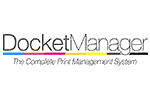
Docket Manager |
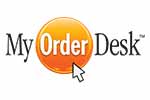
MyOrderDesk |

XMPIE |
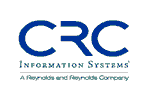
CRC Information Systems |
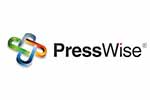
PressWise |
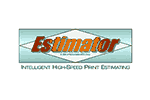
Estimator Corp |
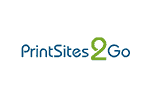
PrintSites2Go |
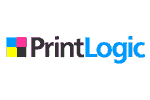
PrintLogic |
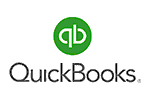
QuickBooks |

RacadTech |
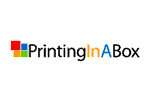
Printing In A Box |
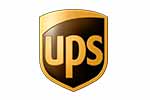
UPS |

FedEx |
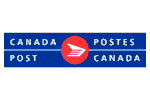
Canada Post |
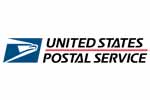
USPS |

DHL |

Australian Post |

Moneris |
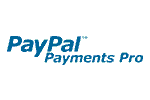
PaypalPro |

Elavon |
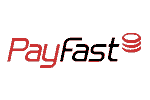
PayFast |

PayPal Standard |

Authorise.net |

Shopify |

Open Cart |
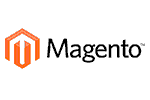
Magento Commerce |

WOO Commerce |

OS Commerce |

Paypal |

Infusionsoft |
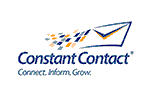
Constant Contact |

Mailers Haven |

Web CEO |
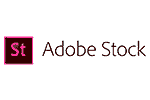
Adobe Stock |

Depositphotos |

Dreamstime |

Fotolia |























